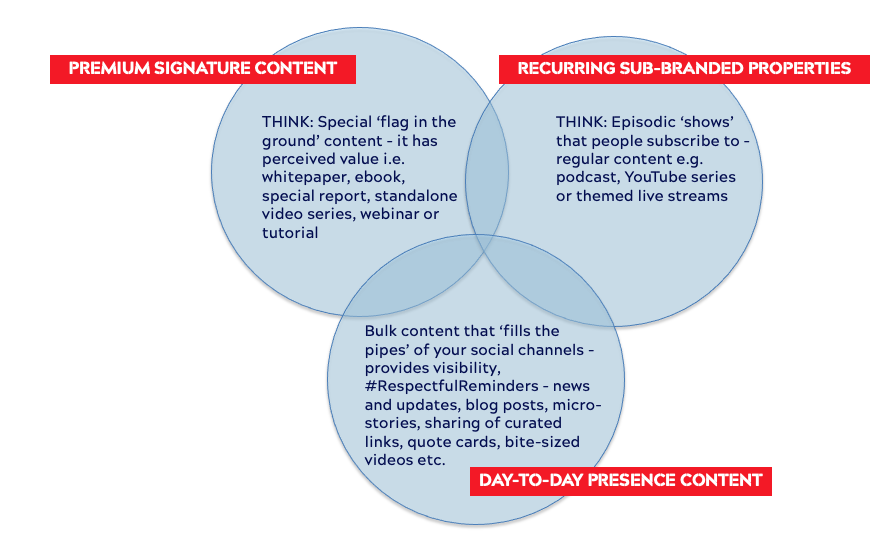
I spent chunks of last week collaborating with Mark Masters on his terrific You Are The Media Month of Learning initiative (see full calendar of activity here). Basically, it’s a month long program of learning featuring different presenters/teachers each week, with interactive study groups and Q&As etc.
My week of teaching was focused on the topic of ‘distribution’; more specifically, standing for something, getting your content out there, and making your mark through a combination of owned, earned and social media.
During our ‘all in’ discussion with participants on Friday, content strategist Sonja Nisson (who led the group in week one) shared a blog post she published in 2011 about ‘stock and flow’.
According to Sonja: “The concept of stock and flow originates from the world of economics but Robin Sloan on the Snarkmarket blog has insightfully linked this to the production of content.”
Sloan wrote in his piece:
Flow is the feed. It’s the posts and the tweets. It’s the stream of daily and sub-daily updates that reminds people you exist.
Stock is the durable stuff. It’s the content you produce that’s as interesting in two months (or two years) as it is today. It’s what people discover via search. It’s what spreads slowly but surely, building fans over time.
I love the analogy; it’s a good reminder that there are different types of content that serve a range of purposes, and that if we’re trying to effectively build our brand out there in the marketplace, we need to do both.
I find this diagram useful
Over the years I’ve broken down content into three ‘mediums’; I’ve found the diagram below very useful in explaining the breadth of ways we can produce and publish content today.

What I refer to as ‘premium signature content’ is similar to what Sloan described as ‘stock’ content; it’s the meaty stuff that makes people sit up and take notice, and if the topic is evergreen in nature, it should hang around for a while and thus becomes a valuable resource for you and your audience. For me, it’s my book Content Marketing for PR and the occasional webinar (I’m thinking I need to do more in this space).
What I call ‘day-to-day presence content’ is similar to what Sloan calls ‘flow’. This content is about keeping up visibility for your brand, or what I like to call ‘respectful reminders’. This content is what you see on social media, plus blog posts, e-newsletters etc.
I’ve added a third type of content, what I call ‘recurring sub-branded properties’. These are essentially shows your audience can subscribe to, or consume in one hit. A live-streamed video show or podcast are two examples. These provide brands both with meaty substance and continuity, but can be difficult to get going and maintain. My video/podcast show Reputation Revolution is a good example of a sub-branded content property.
Think like a TV network
More recently, digital marketing guru Jay Baer wrote an article explaining what he saw as the “three types of content shows” you can create for your brand (here’s the article, scroll down a bit).
Jay says we need to think like a television network and “create shows”. I love how he couches it:
- Binge-worthy shows: “These shows are big, steady ongoing content initiatives that have the same theme and format” e.g. video or webinar series
- One-time shows: “These shows are special quarterly or yearly shows that attack a major customer pain point or topic” e.g. whitepapers, research papers
- Regularly-scheduled programming: “These shows are ongoing content initiatives that round out your calendar, and they don’t have to necessarily connect completely or be 100 percent consistent in theme” e.g. blog posts
It doesn’t matter which way you look the various types of content as per above, the key message here is that there are different types of content, they serve different purposes and, for best results, it’s good to mix ’em up!



Leave a Reply